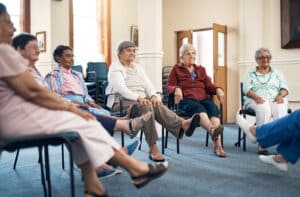Assisted Living Residents Have Lower Levels of Physical Activity
A recent pilot study conducted in eight assisted living communities concluded that residents do not get enough physical activity in order to maintain a healthy lifestyle, reports McKnight’s.
The study was conducted by researchers from the University of Michigan School of Nursing. They observed 54 residents of whom many had minimal physical activity and mostly a sedentary lifestyle. Most sat for times longer than 30 minutes or an hour. The effect of their daily physical activity on health and social factors was analyzed.
Janet L. Larson, Ph.D., RN, stated, “What I was fascinated by is that 72% of time-accumulated stepping was in less than two-minute bouts. That was startling. They’re not walking for any length of time.”

